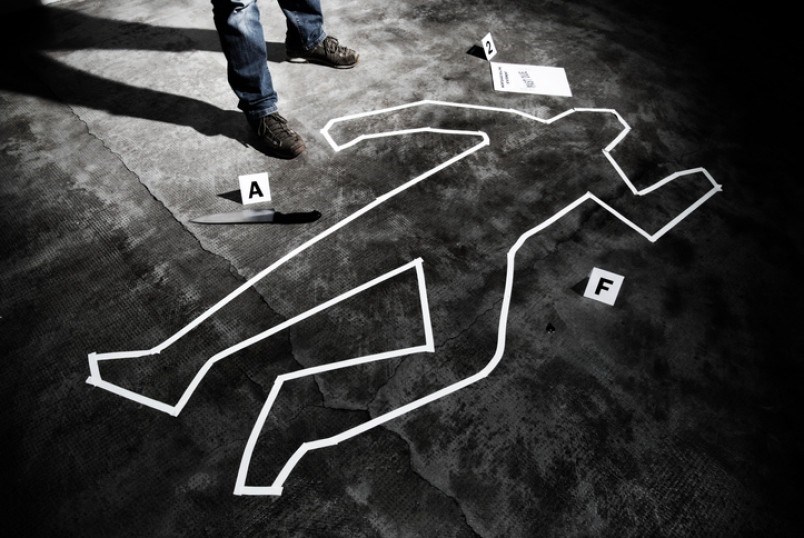Someone could get away with the perfect murder if the province’s Coroners Service is forced to release its policy and procedures manual, the agency warns in newly released documents.
Records released under provincial freedom of information law indicate the service has fought the release of its manual for several years. In 2011, it argued that the release “could harm the effectiveness of its investigative techniques, [and] assist someone planning to cause a death to avoid detection, thereby rendering the investigative techniques and procedures ineffective.”
In an internal email following an August 2018 request for the manual, chief coroner Lisa Lapointe affirmed that point, saying the province needed “to carefully consider what may be harmful to our investigations.”
The manual has not been released, although Glacier Media has obtained a 2015 draft copy of it. The draft manual provides such details as how dead bodies are examined at a death scene, whether cause of death is natural, suicide, suspicious and, if violent, how it happened.
If a person planning to kill someone knew techniques for determining cause of death, he or she could take actions to influence a coroner’s judgment as to whether death was natural or accidental as opposed to a homicide, the provincial privacy commissioner has ruled.
The manual is issued under the provincial Coroners Act. The 2015 draft copy shows those techniques fall into death-scene examination, examination and photographing of bodies, parts of bodies of special interest and autopsies. Much of that information is posted on the service’s special investigations website or in the operational manual.
Glacier Media requested it as part of an investigation into concerns that the service did not correctly handle the remains of serial killer Robert Pickton’s victims. That request has been subject to multiple government extensions.
A further freedom of information request about the handling of the August request yielded documents showing the service and B.C. Information and Privacy Commissioner fear knowledge of techniques could help criminals manipulate death scenes.
The 2011 application for the manual argued before the commissioner that investigative techniques could be found on television, in books, forensic manuals or through forensic anthropology, chemistry or criminology courses.
The service disputed that, saying the argument applied to techniques used by others. Releasing the manual, it said, would confirm which techniques B.C.’s service does and does not use.
The commissioner accepted the service’s argument that revealing the manual’s investigative techniques “could lead to the termination of a criminal investigation without arrest in a case where a crime was committed.”
The service is responsible for investigating all sudden and unexpected, unexplained or unattended deaths. Through an investigation, a coroner classifies a death as natural, accidental, suicide, homicide or undetermined. Police and prosecutors can rely on coroners’ evidence for court proceedings.
Sections of manual would have to be blacked out to prevent investigative techniques from being revealed, released documents said.
Five questions coroners seek answers to when attending a death scene are identification of the deceased, time and date of death, location of death, cause of death and manner of death.
A coroner would examine a body head to toe, particularly the chest and head area, and would examine clothing.
In case of suspicious deaths or homicides, the head-to-toe and clothing exams must not be done, though the should be examined for abrasions, lacerations, bruising and gunshot wounds. The skull should be checked to find areas where bones may not align. Ears should be examined for fluid and the mouth for vomit or foam. The neck is checked for signs of use of a ligature. Arms are examined for cuts, abrasions, scuffs and needle marks.
At a scene, a coroner looks for food, medications, signs of hoarding, illicit drugs, alcohol, and drug paraphernalia, receipts and phone records. Bodies are photographed.
“The information a coroner gains by directly viewing the place of injury or death, the surrounding circumstances, and the body in those circumstances will frequently provide answers to some or all of the five key questions,” the draft manual said.
The service also maintains a human remains inventory through which newly discovered remains can be compared against past finds.
GPS coordinates coroners take at scenes are also put into the inventory for cross-referencing future unidentified human remains findings.
Coroners take charge of bodies and arrange for autopsies as needed.
The draft manual also discusses involvement with families of deceased people, interviewing witnesses, working with other agencies such as police, expert assistance, file management and how to deal with media.
Reach this reporter at jhainsworth@glaciermedia.ca




